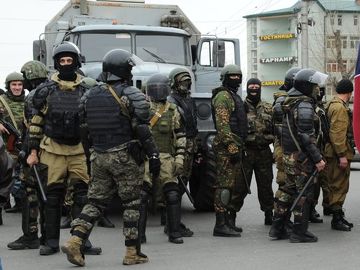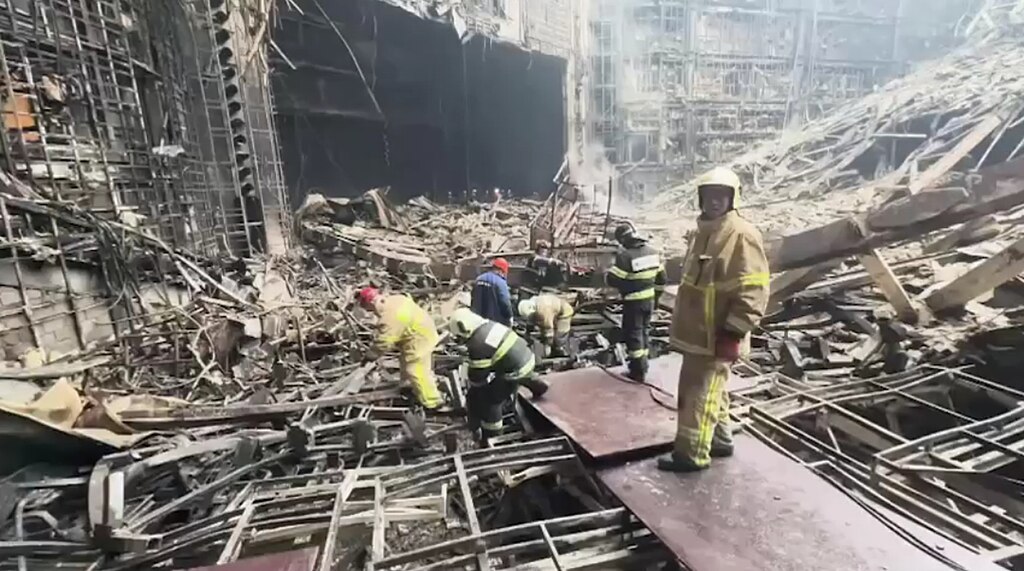
The ‘Khasavyurt Group’: A New Watershed of Islamic State Activity in Dagestan
The ‘Khasavyurt Group’: A New Watershed of Islamic State Activity in Dagestan
The discovery of what appears to be a sizeable Islamic State (IS) cell in the Russian city of Khasavyurt, located in the North Caucasian republic of Dagestan, has sparked numerous violent confrontations as long-simmering tensions between Russian authorities and adherents of Salafism in the region erupt once again into open hostilities.
While the extent of the previously unknown group is still to be fully determined, its discovery has put the city of Khasavyurt at the heart of an Islamist insurgency and could mark the most acute IS penetration of the Caucasus region to date.
The Khasavyurt Group
On December 29, 2016, sources within the Russian Federal Security Service (FSB) announced that seven IS fighters had been detained at an unspecified location in Dagestan (Ren TV, December 29, 2016). The militants were allegedly planning a series of Bataclan-style attacks in Moscow, in which armed suicide bombers would have opened fire on public gatherings during New Year’s celebrations before detonating their suicide belts. The detainees, all natives of the Khasavyurt region, had allegedly received training in Syria before returning home. The FSB claimed the attacks had been planned on the orders of IS leaders in Syria, seeking to exact revenge for Russia’s participation in the conflict there (RBC, December 29, 2016).
An FSB statement described the detained militants as part of the “Khasavyurt Group,” a previously unknown extremist cell in the western Dagestani city of Khasavyurt (Ren TV, January 1, 2017). The FSB says the group is linked to IS, but until the arrests in December had remained unknown to the authorities and had not appeared on any government watch lists (Caucasian Knot, December 30, 2016).
In the evening on December 29, another three militants in Khasavyurt were killed in a shootout with police (Caucasian Knot, December 30, 2016). Further fighting broke out in the village of Yamansu, 15 kilometers (km) southwest of Khasavyurt, on January 1. In that encounter, police shot dead two more insurgents also said to be part of the Khasavyurt Group, which at that point police estimated had only about ten members remaining (Caucasian Knot, January 1; RBC, December 29, 2016).
Violent incidents continued to unfold in Khasavyurt and across the region throughout January. Security forces shot dead two more Khasavyurt Group members on the outskirts of Kizlyar, 60 km north of Khasavyurt, on January 21 (Caucasian Knot, January 21). Another three militants were killed in Khasavyurt itself in a security operation on January 29 (Caucasian Knot, January 29).
The total number of militants killed and detained in Khasavyurt since December 29 suggests a group of unusual size and ambition for the region.
Numbers from media reports of security operations indicate a total of seven militants detained and 10 others killed in battles with police. It is likely not all of these fighters are necessarily members of the Khasavyurt Group, as there is some incentive for local security forces to inflate their successes and embellish the figures. Even by conservative estimates, however, the group appears to have at least initially consisted of more than 20 individuals. That would make it one of the larger militant cells in the North Caucasus in recent years. The group’s plans to conduct attacks in Moscow and speculative links to a large training camp discovered in the forests southeast of Khasavyurt suggest it could be even larger (Caucasian Knot, November 30, 2016).
Local Tensions Inflamed
Prior to the events of the past year, Khasavyurt itself was not considered particularly vulnerable to Salafist militancy.
Despite regular clashes throughout the region between militants and security services, Khasavyurt remained largely untouched by the violence there. In August and September 1999, the city’s hinterland was notably the location at which local Dagestani militants aided federal security forces in repulsing an incursion by Chechen rebels commanded by Shamil Basayev (Moscow Defense Brief, 2001). The establishment of the Khasavyurt Group, however, represents the natural evolution of the ongoing battle between local political authorities and Salafist Islamists in Dagestan.
Tensions have been building for years as the influx of hardline Islamist thought has, in some areas, displaced traditional Sufism. In Khasavyurt itself, those tensions manifested most clearly in early 2016, when local authorities attempted to close the Severnaya and Vostochnaya mosques, the two largest Salafist mosques in the city.
Authorities claimed the attempted closure of the Severnaya mosque was due to its reputation as a recruiting ground for IS. Growing protests on the matter culminated in a march on January 31, 2016 that drew thousands of civilian demonstrators, primarily young men, onto the streets. One participant claimed that IS elements had tried to convince protesters to take up arms and “declare jihad on the authorities” (Meduza, February 24, 2016).
While the mosques were eventually allowed to remain open, the atmosphere in the city is one of suspicion. The authorities regard large segments of the local populace as potential militants under the sway of Salafist imams, while the strength of the protests indicated the necessary civilian support mechanisms for an insurgency — sympathetic elements of the population willing to aid potential militants — already exists.
Authorities in Dagestan maintain a list of “Wahhabists” — civilians they deem to be budding terrorists (Human Rights Watch, June 2015). The list includes 100,000 individuals (out of a population of three million), each of whom can expect persistent harassment from security forces. That kind of treatment may be counter-productive, as noted by the assistant imam at the Vostochnaya mosque, Murad Dibirov. He invoked the volatile “Caucasian temperament” and spoke of the pride a young person might have upon seeing his countryman, having joined the jihad in Syria, “on a tank with a machine gun, having found total freedom” (Meduza, February 24, 2016).
Islamic State in the Caucasus
The events in Khasavyurt mark one incidence of a growing IS presence in the Northeast Caucasus.
In Ingushetia in October, following a shootout with security forces, authorities killed an IS emissary sent from Syria to establish a new IS cell there (NTV, October 10, 2016). Chechnya has also seen a spate of militant activity in recent months, including a shootout in the capital Grozny that marked the worst fighting in the city in two years. In December, five militants infiltrated the city and opened fire on police along the main boulevard, in an attack later claimed by IS (RBC, December 20, 2016). Following the attack, in mid-January, Chechnya saw the largest counterterrorism operation in the Republic in years, as authorities searched for militants in several districts south and east of Grozny (Kavkaz.Realii, January 11).
The degree to which IS is really involved in the creation and direction of terror cells in the Caucasus is likely limited. While it has largely displaced the Caucasus Emirate, the traditional vehicle for insurgent activities in the region, IS probably serves more as a brand, one to which local militants can declare affiliation, rather than a true franchise operating with a hierarchical chain of command. This is borne out by local experts, who point to the shootout with supposed IS-linked militants in Grozny in December and note that a true IS-organized cell would likely have been provided with better weaponry (OnKavkaz, December 19, 2016).
Prospects for Future Conflict
Insurgent activity in Dagestan is once again on the rise. Officials in Makhachkala, Dagestan’s capital, recently estimated there are 1,200 Dagestanis fighting for IS in Syria, while deaths from the conflict in Dagestan rose 33 percent in 2016 (Caucasian Knot, January 31). January alone has seen Dagestan mount five counterterrorism operations, several of them aimed at countering the Khasavyurt Group.
With the Caucasus Emirate now nearly defunct, local security forces have noted militants adopting a compartmentalized structure (Life News, 9 January, 2017). Individual cells often contain as few as two or three militants. In that respect, the Khasavyurt Group’s size sets it apart from other militant organizations in the region, but the degree of IS control is still yet to be determined.
The discovery of the group has put Khasavyurt city at the center of an Islamist extremist insurgency in Dagestan. While the cell has been weakened, it will likely resurface in the weeks and months to come.


